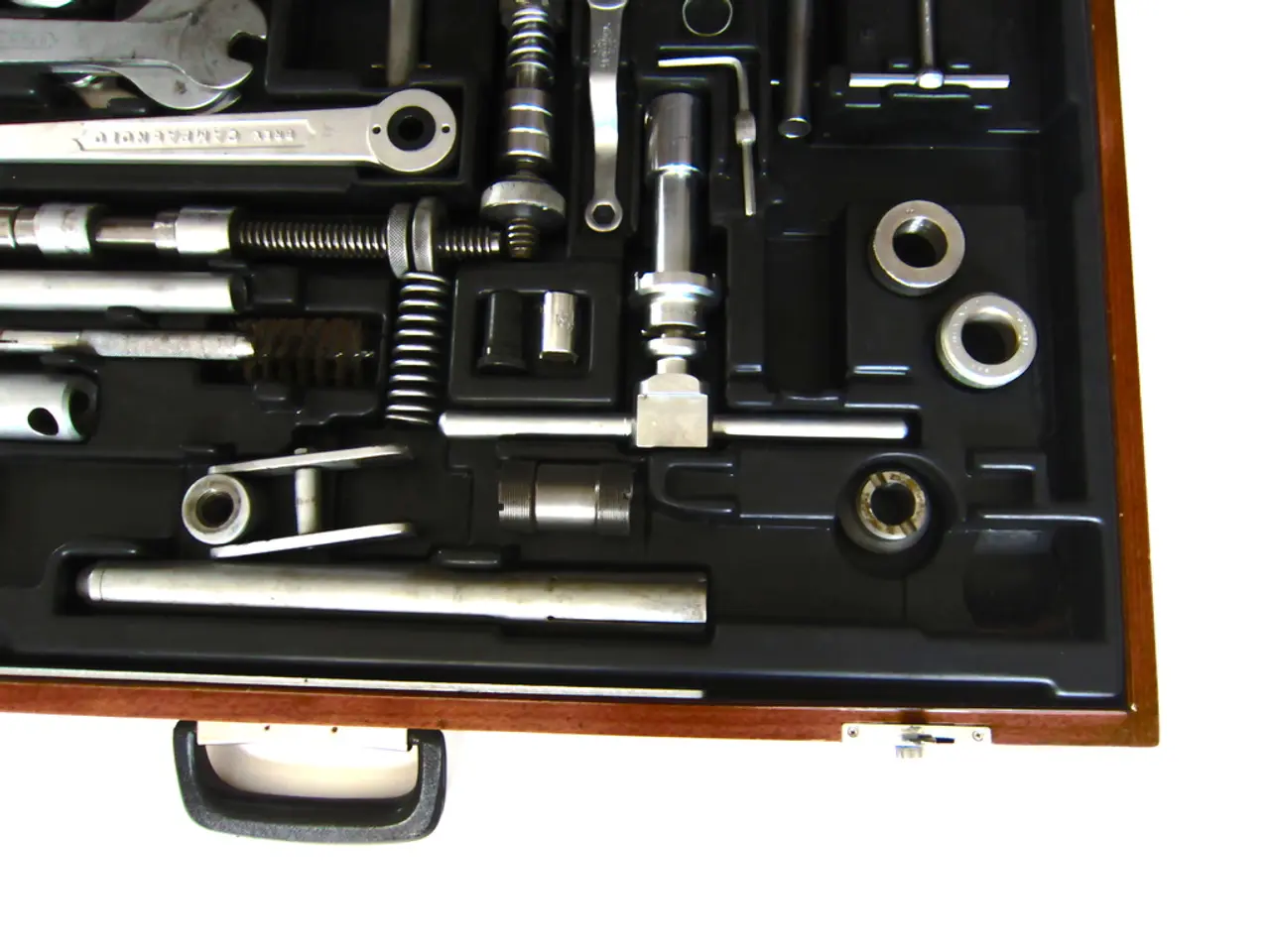Which engineering field dominantly employs SolidWorks or AutoCAD?
In the dynamic world of computer-aided design (CAD), two names often stand out: AutoCAD and SolidWorks. These powerful tools have become staples in various engineering fields, each with its unique strengths and applications.
AutoCAD, developed by Autodesk, is one of the oldest and most widely-used CAD programs, boasting a market share of approximately 39% compared to SolidWorks' 13-14%, according to recent data from 2025[1][2]. This widespread popularity makes AutoCAD a versatile choice across many disciplines.
When it comes to specific engineering fields, the preference for either software tends to differ.
In the realm of Mechanical Engineering, SolidWorks is highly preferred for 3D mechanical modeling and simulation, making it a leading choice for many mechanical engineers[3]. AutoCAD is also used but more for 2D drafting or when interoperability across disciplines is needed.
Civil Engineering, on the other hand, leans more towards AutoCAD due to its strength in 2D drafting, site planning, and integration with other Autodesk products used in civil workflows (like Civil 3D and Revit)[3].
In the field of Architectural Engineering, AutoCAD, particularly with its Architecture version, is more commonly used than SolidWorks. It is favored for drafting, building plans, and BIM-related tasks[1].
Electrical Engineering tends to rely more on AutoCAD Electrical or specialized AutoCAD versions for electrical schematics and designs. SolidWorks is rarely used in this field[4].
In summary, while AutoCAD is overall more widely used in the engineering industry, SolidWorks has a stronger presence and is often the software of choice in mechanical and product design applications.
| Engineering Discipline | More Commonly Used Software | Reason/Context | |-----------------------|-----------------------------------|-------------------------------------------------------------------------------| | Mechanical | SolidWorks | 3D modeling, mechanical simulation, product design | | Civil | AutoCAD | 2D drafting, site planning, integration with civil BIM | | Architectural | AutoCAD (Architecture) | Building plans, BIM integration | | Electrical | AutoCAD Electrical | Electrical schematics, 2D design focused |
For those entering civil, architectural, or electrical engineering, AutoCAD skills are a must-have. On the other hand, if you're focused on mechanical or product design, SolidWorks skills are heavily demanded.
As the industry continues to evolve, with the rise of 3D printing, SolidWorks is becoming more essential for rapid prototyping. AutoCAD, however, continues to dominate in civil, architectural, and electrical engineering due to its precise 2D drafting capabilities and flexible file compatibility.
[1] Market Data 2025: CAD Software Market Share - AutoCAD vs SolidWorks [2] AutoCAD and SolidWorks Market Trends in 2025 [3] Engineering Software Preferences: AutoCAD vs SolidWorks [4] Electrical Engineering Software Usage: AutoCAD vs SolidWorks
Technology plays a significant role in shaping the future of various engineering disciplines. AutoCAD, a widely-used computer-aided design (CAD) program, is commonly utilized in civil, architectural, and electrical engineering for its precise 2D drafting capabilities and flexible file compatibility. Meanwhile, SolidWorks, particularly in the realm of Mechanical Engineering, is highly preferred for 3D modeling, mechanical simulation, and product design, making it an essential tool for those working in mechanical or product design fields.




